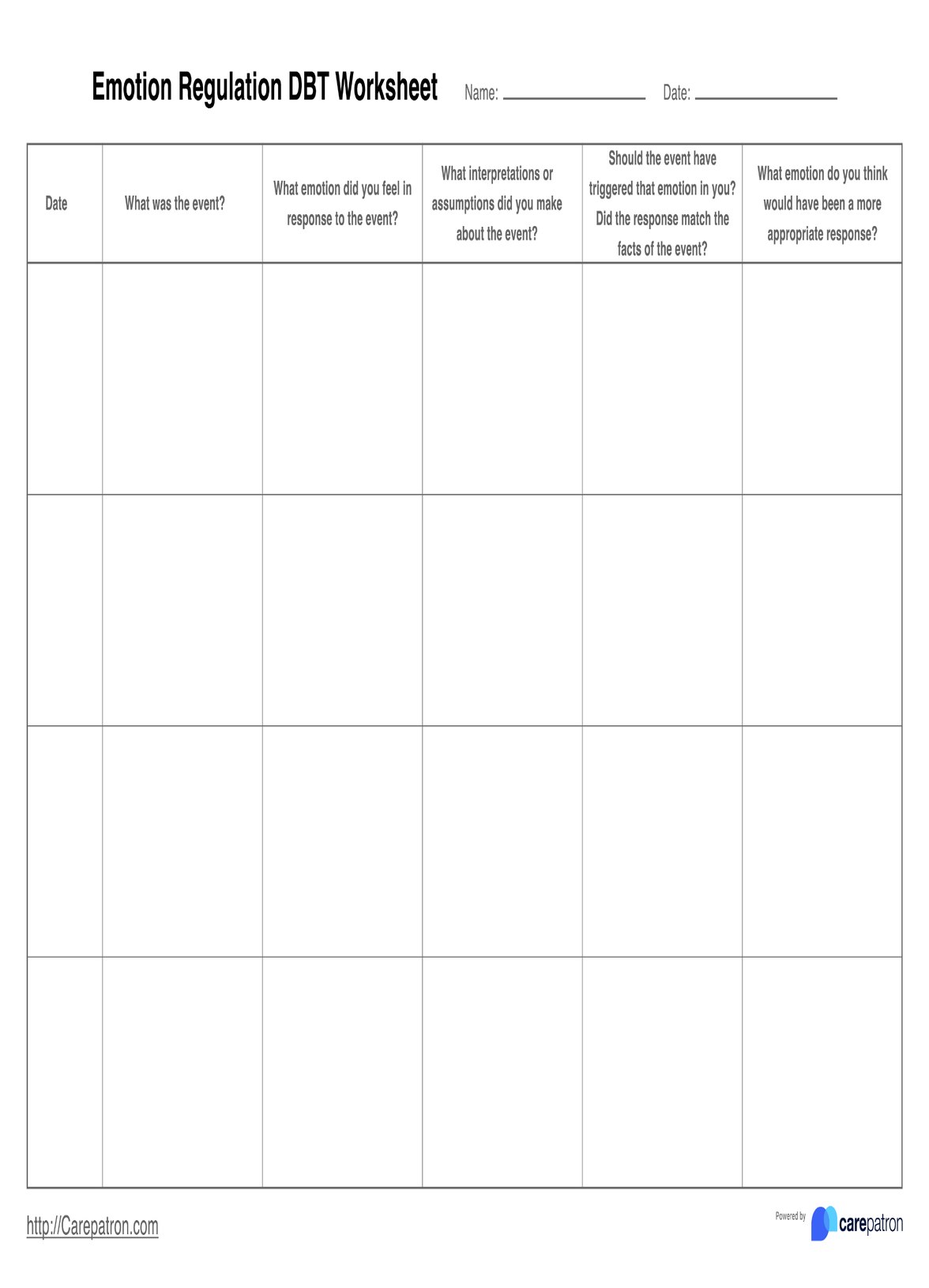We recommend giving the emotion regulation DBT worksheet to your clients during the early phase of their treatment. This will enable you to use the answers they respond with to develop a targeted treatment plan and guide your client toward their goals. Additionally, if they are completed early, these worksheets can be a good indicator of how much progress a client has made.

Emotion Regulation DBT Worksheets
Use our emotion regulation DBT worksheet and encourage clients to reflect on their emotional responses, triggers, and coping skills. This free resource empowers clients to achieve their desired outcomes.
Emotion Regulation DBT Worksheets Template
Commonly asked questions
Emotion Regulation DBT worksheets will vary slightly in the prompts they ask. We think the most important aspects are getting clients to reflect on their experiences with intense emotions, how these have affected their lives, and the different coping strategies they employ. All of these sections are included in our worksheet, but you can feel free to instruct the client to only complete whatever they feel most comfortable with, or whatever you think is most applicable to your treatment.
The worksheet is designed to be completed by the client. If you have a client who struggles with completing this kind of work, feel free to assist them with their answers, as long as their responses are accurate reflections of their experiences.
EHR and practice management software
Get started for free
*No credit card required
Free
$0/usd
Unlimited clients
Telehealth
1GB of storage
Client portal text
Automated billing and online payments











